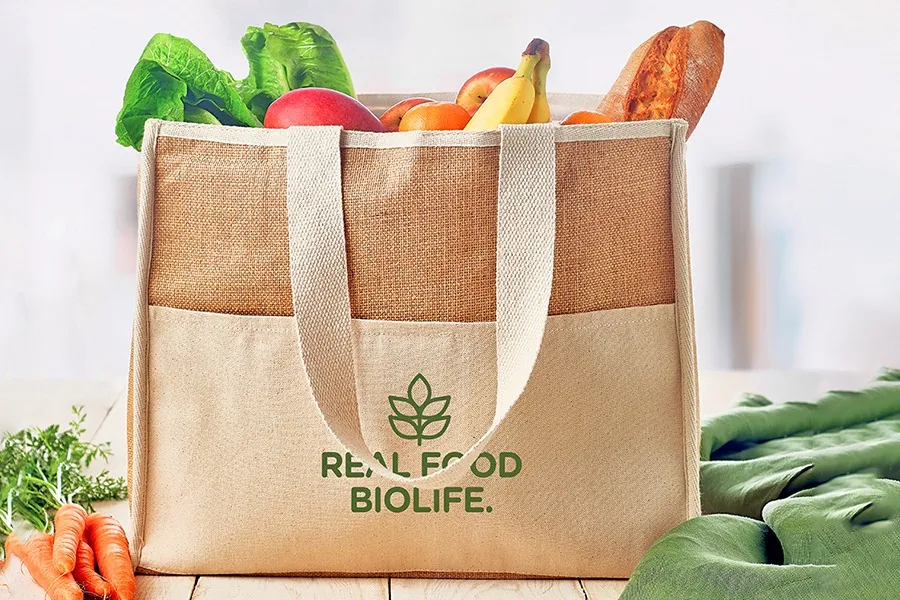In a world increasingly burdened by environmental pollution and climate change, the small choices we make daily can significantly impact the health of our planet. One of the simplest yet most effective lifestyle changes we can adopt is switching from single-use plastic bags to reusable stitched bags. These eco-friendly alternatives offer numerous environmental, economic, and even social benefits. Let’s explore why reusable stitched bags are not just a trend but a necessary shift toward sustainability and environmental responsibility.
1. Reducing Plastic Waste: A Global Priority
Plastic pollution is one of the most pressing environmental challenges we face today. According to environmental studies, over 5 trillion plastic bags are used globally every year. Most of them are discarded after a single use and take hundreds of years to decompose. During this time, they clog landfills, litter landscapes, and pollute oceans, posing a serious threat to marine and wildlife.
Reusable stitched bags are typically made from durable materials such as cotton, jute, canvas, or recycled PET (R-PET), which can withstand hundreds of uses. Each time you use a reusable bag, you prevent another plastic bag from entering the waste stream. Over a lifetime, a single stitched bag can replace hundreds or even thousands of disposable ones, making a huge impact on reducing plastic waste.
2. Energy and Resource Efficiency
The production of plastic bags consumes significant fossil fuels and energy. Moreover, plastic bags require petroleum, a non-renewable resource, for manufacturing. On the other hand, stitched bags, especially those made from natural fibers or recycled materials, have a lower carbon footprint.
For instance, cotton bags can be composted at the end of their life cycle, while bags made from recycled plastic bottles (R-PET) reduce the demand for virgin plastic, which is energy-intensive to produce. Though stitched bags may require more resources to manufacture initially, their extended lifespan makes them far more resource-efficient over time.
3. Durability Means Less Consumption
One major advantage of stitched bags is their durability and strength. Whether you’re carrying groceries, clothes, or books, these bags are designed to last. They can handle heavier loads without tearing or breaking, which reduces the need for constant replacements.
This durability encourages responsible consumption habits. When consumers use one high-quality bag for multiple years, the environmental cost of producing new bags repeatedly is avoided. Fewer resources are used, and less waste is created. This aligns with the global movement toward sustainable consumption and a circular economy.
4. Promoting a Culture of Reuse and Responsibility
Stitched bags symbolize more than environmental awareness—they represent a shift in mindset. When people carry reusable bags, it sparks conversations and encourages others to do the same. This ripple effect fosters a culture of reusability and responsibility in communities.
Schools, markets, and even governments have started advocating for stitched bags to reduce plastic dependency. Several countries and cities have already banned or taxed single-use plastic bags. In this context, stitched bags have emerged as a practical and impactful alternative, promoting environmental consciousness at every level of society.
5. Economic and Social Benefits
Beyond their environmental benefits, reusable stitched bags contribute positively to local economies. Many stitched bags are produced by small-scale industries, women-led cooperatives, or artisanal groups, particularly in developing countries like Pakistan, India, and Bangladesh. Supporting stitched bags means supporting fair wages, local craftsmanship, and sustainable livelihoods.
Moreover, using these bags can lead to cost savings for retailers and consumers. Some stores offer discounts to shoppers who bring their own bags, and municipalities save money by managing less plastic waste. It’s a win-win for both the economy and the environment.
6. Customization and Aesthetic Value
Stitched bags come in a variety of designs, materials, and sizes. They can be customized for branding, events, or personal use. Unlike plain plastic bags, stitched bags have aesthetic appeal and become part of an individual’s style statement. This added value increases the likelihood of reuse and encourages more people to adopt them.
A well-made, attractive bag is more likely to be kept, used regularly, and cherished—further reducing the need for disposable alternatives.
7. Encouraging Innovation in Eco-Friendly Solutions
The rise in demand for reusable stitched bags has spurred innovation in sustainable materials and design. From R-PET made of recycled plastic bottles to organic cotton and biodegradable fabric blends, the stitched bag industry is pushing boundaries to find greener solutions.
This innovation is critical for our planet’s future. By supporting stitched bags, we not only address today’s problems but also encourage the development of better, more sustainable products for tomorrow.
Conclusion: Small Action, Big Impact
The fight against environmental degradation begins with everyday choices. Choosing reusable stitched bags may seem like a small act, but it represents a larger commitment to protecting our planet. From reducing plastic pollution to supporting sustainable industries, these bags are an emblem of conscious living.
As global citizens, it’s our responsibility to think beyond convenience and consider the legacy we leave behind. Reusable stitched bags offer a simple, affordable, and powerful way to reduce our environmental footprint—and every time we carry one, we carry the promise of a cleaner, healthier Earth.

